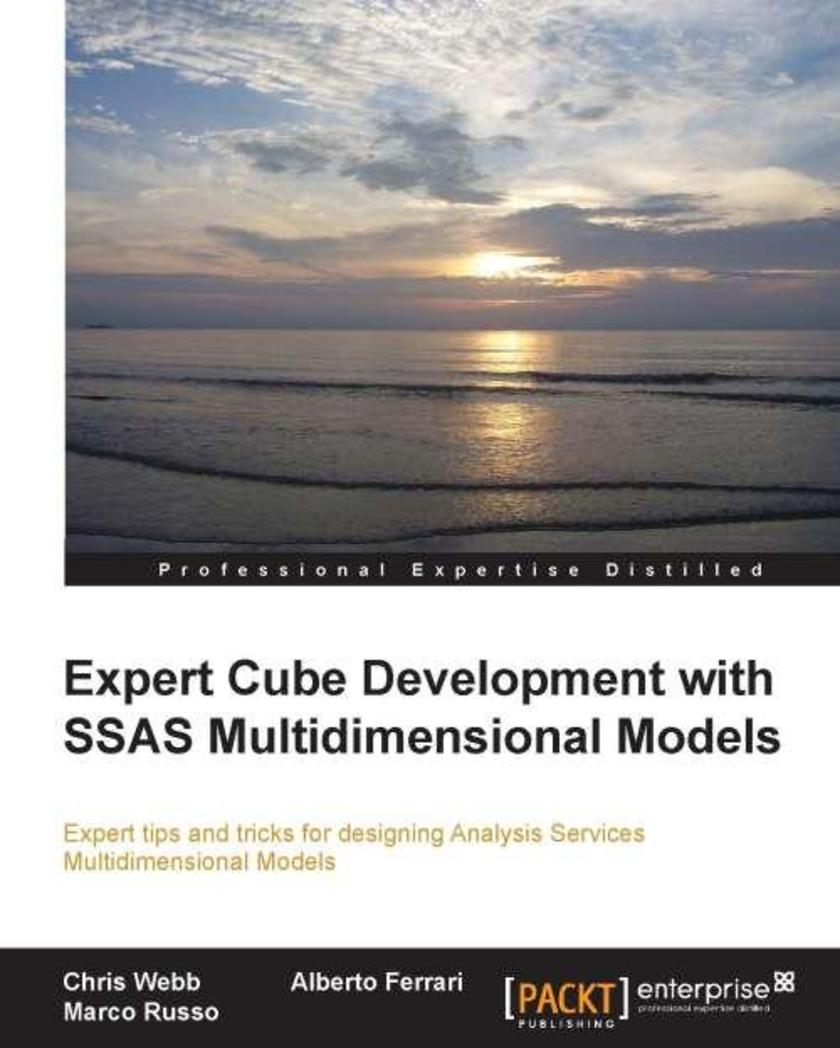
Expert Cube Development with SQL Server Analysis Services 2012 Multidimensional
¥90.46
An easytofollow guide full of hands on examples of realworld Analysis Services cube development tasks. Each topic is explained and placed in context, and for the more inquisitive reader, there also more indepth details of the concepts used. If you are an Analysis Services cube designer wishing to learn more advanced topic and best practices for cube design, this book is for you.You are expected to have some prior experience with Analysis Services cube development.
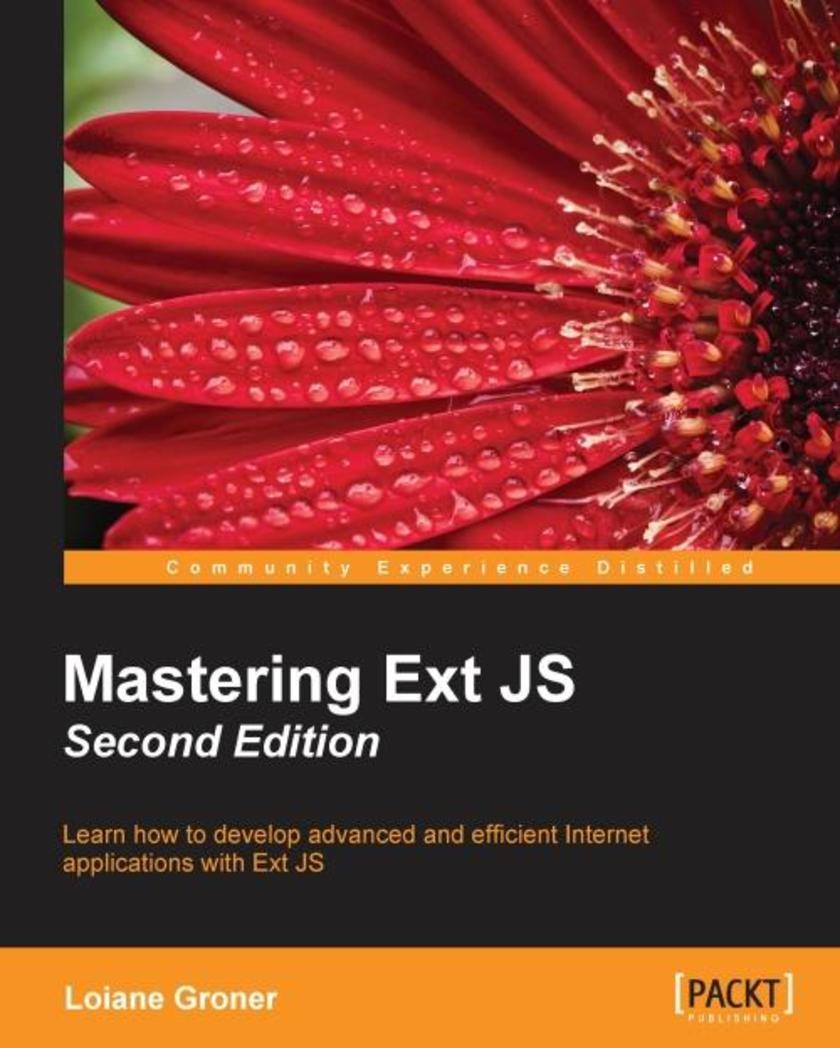
Mastering Ext JS - Second Edition
¥90.46
If you are a developer who is familiar with Ext JS and want to augment your skills to create even better web applications, this is the book for you. Basic knowledge of JavaScript/HTML/CSS and any server-side language (PHP, Java, C#, Ruby, or Python) is required.
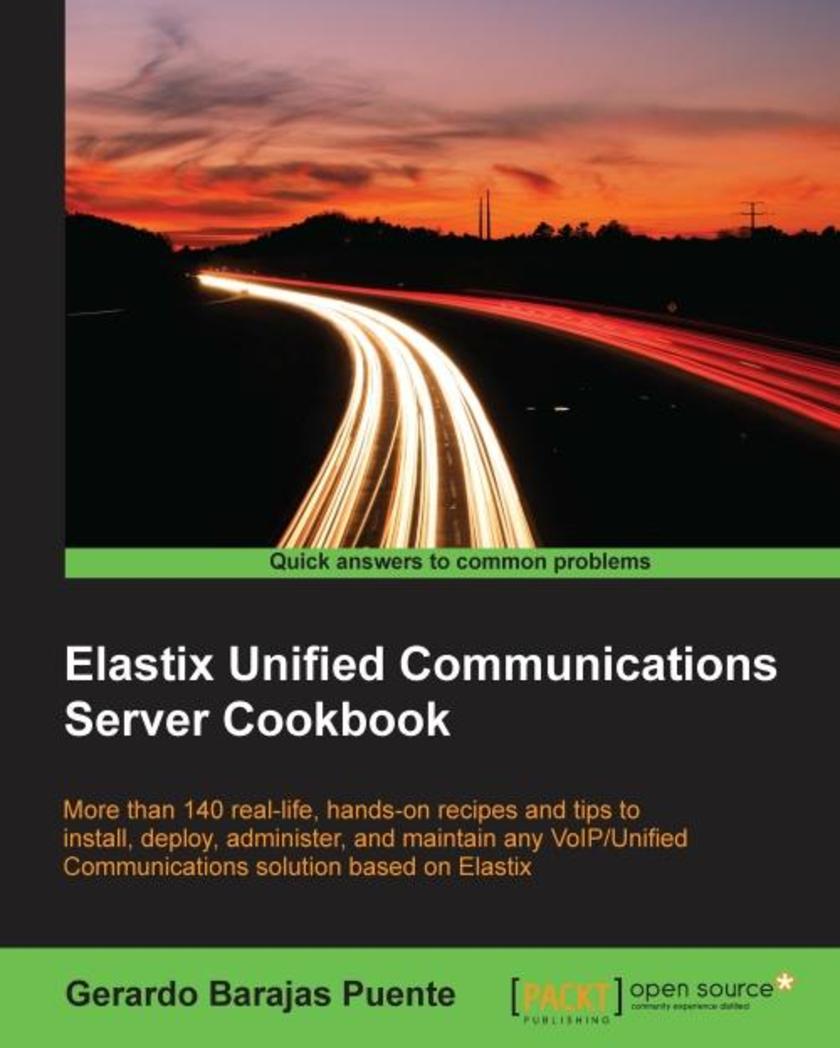
Elastix Unified Communications Server Cookbook
¥90.46
This book is aimed at those who want to learn how to set up an Elastix Unified Communications Server without losing ground on Unified Communications and Voice over IP.

iOS Game Programming Cookbook
¥90.46
This book is for developers who are willing to explore iOS game programming in depth. Good knowledge level and understanding of iOS game development will be an added advantage. You should already have a working installation of Xcode and Sprite kit.
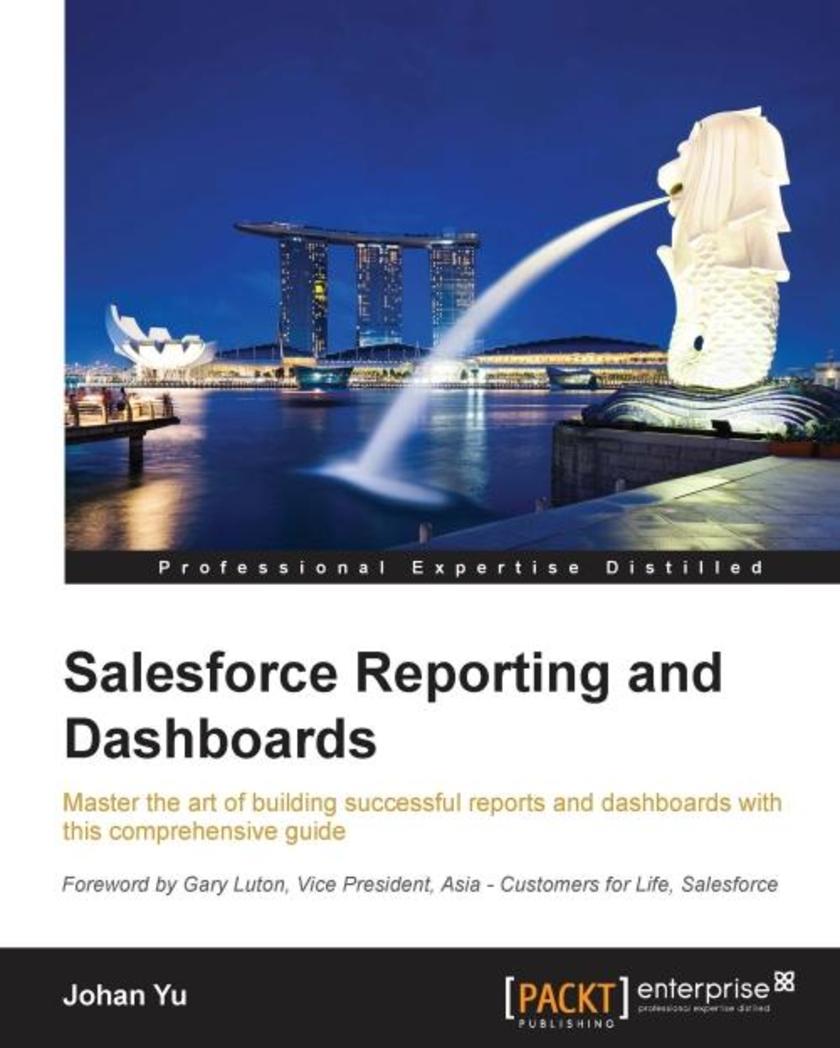
Salesforce Reporting and Dashboards
¥90.46
This book is intended for all Salesforce users—administrators, managers, business analysts, or report writers who are new to creating reports or dashboards within Salesforce. Basic knowledge of the Salesforce platform is required.
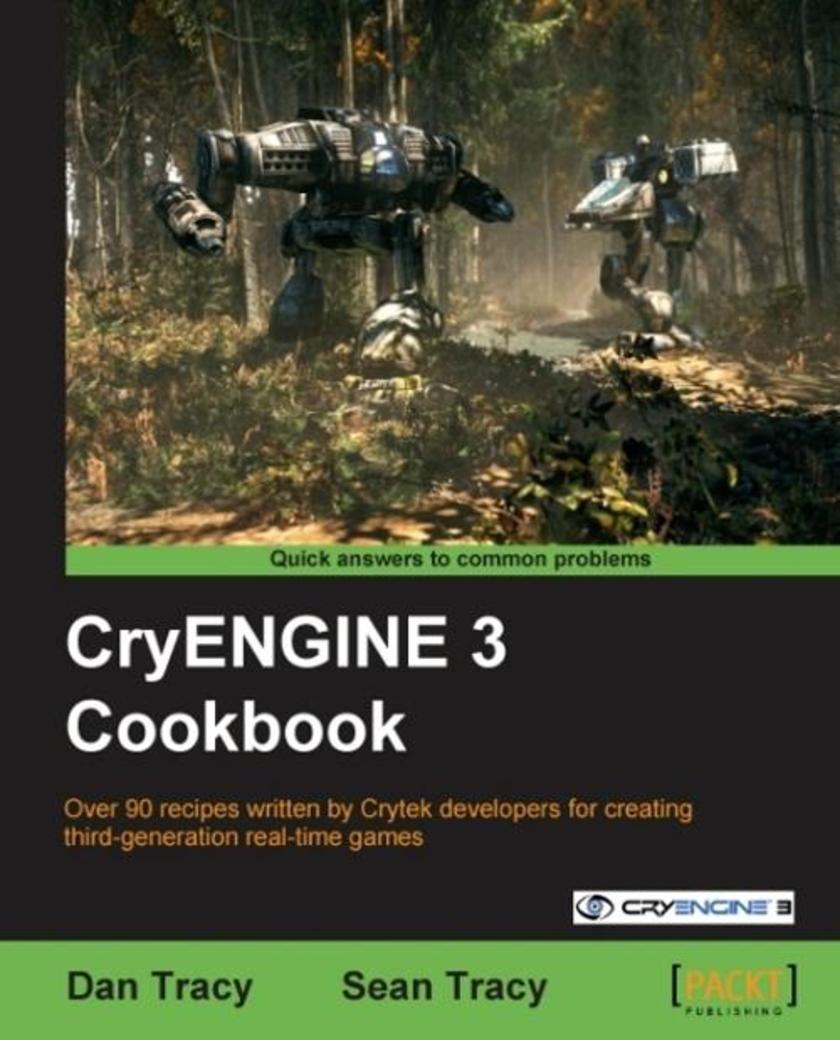
CryEngine 3 Cookbook
¥90.46
Written in a cookbook style, this book offers solutions using a recipe based approach. Each recipe contains step-by-step instructions followed by an analysis of what was done in each task and other useful information. The cookbook approach means you can dive into whatever recipes you want in no particular order. The CryENGINE3 Cookbook is written to be accessible to all developers currently using the CryENGINE3. It also explores the depth and power of the CryENGINE3 and is a useful guide to follow when becoming familiar with this award winning middle-ware game engine. This book is written with the casual and professional developer in mind. Fundamental knowledge of some Digital Content Creation Tools, like Photoshop and 3d Studio Max is required. The Software Development Kit version of the CryENGINE is used for all examples, so the reader should have a version of the development kit to follow the recipes contained in this book.

Flash Development for Android Cookbook
¥90.46
Written in cookbook style, this book offers solutions to all common Flash Android development problems through recipes. Each recipe contains step-by-step instructions followed by analysis of what was done in each task and other useful information. The book is designed so that you can read it chapter by chapter, or you can look at the list of recipes and refer to them in no particular order. This book contains recipes covering a variety of topics from the very simple to those that are more advanced. If you are a seasoned Flash developer, this book will get you quickly up to speed with what is possible with Android. For those who are new to Flash, welcome to the world of visually rich, rapid application development for mobile Android devices! If you have any interest in Flash development for Android, this book is for you.

Sage Beginners Guide
¥90.46
This is a beginner's guide with clear step-by-step instructions, explanations, and advice. Each concept is illustrated with a complete example that you can use as a starting point for your own work. If you are an engineer, scientist, mathematician, or student, this book is for you. To get the most from Sage by using the Python programming language, we'll give you the basics of the language to get you started. For this, it will be helpful if you have some experience with basic programming concepts.
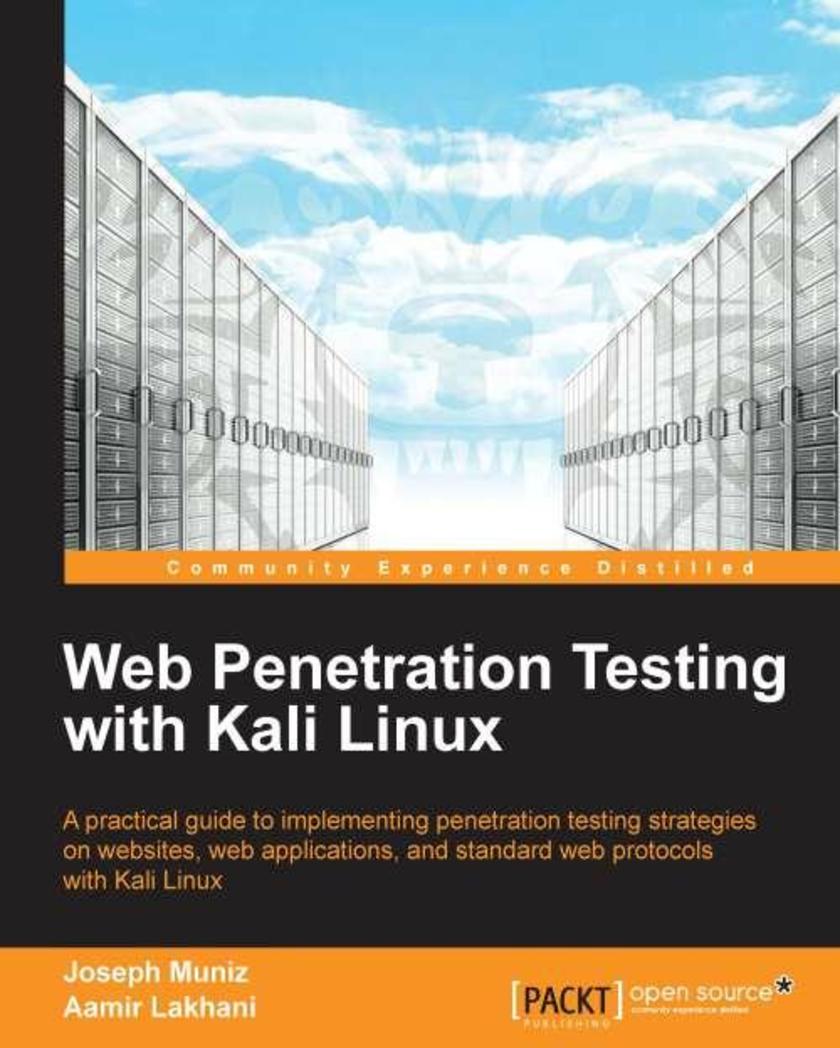
Web Penetration Testing with Kali Linux
¥90.46
Web Penetration Testing with Kali Linux contains various penetration testing methods using BackTrack that will be used by the reader. It contains clear step-by-step instructions with lot of screenshots. It is written in an easy to understand language which will further simplify the understanding for the user."Web Penetration Testing with Kali Linux" is ideal for anyone who is interested in learning how to become a penetration tester. It will also help the users who are new to Kali Linux and want to learn the features and differences in Kali versus Backtrack, and seasoned penetration testers who may need a refresher or reference on new tools and techniques. Basic familiarity with web-based programming languages such as PHP, JavaScript and MySQL will also prove helpful.
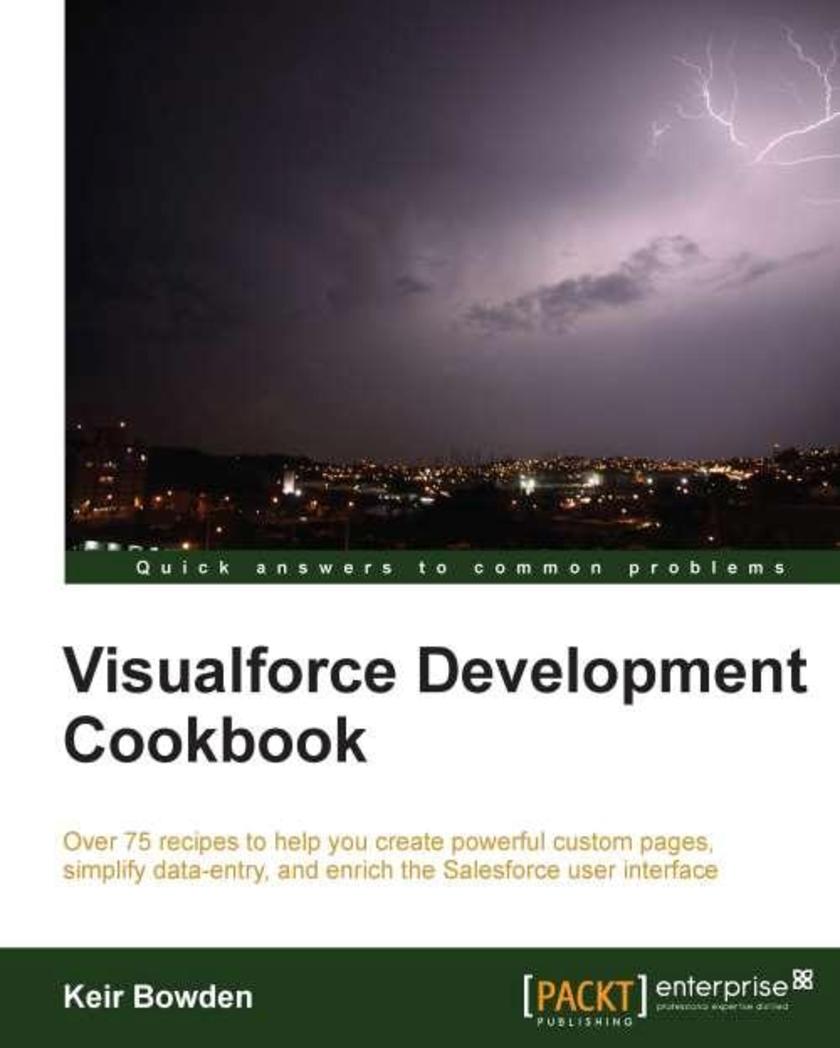
Visualforce Development Cookbook
¥90.46
Visualforce Development Cookbook is written in such a way that even complex concepts are explained in an easy-to-understand manner. Following a Cookbook structure, the book covers some essential technical scenarios and includes over 75 recipes focusing on real-world development problems. This book is packed with illustrations and also contains lots of code samples for the better understanding of the reader."Visualforce Development Cookbook" is aimed at developers who have already grasped the basics of Visualforce. Awareness of the standard component library and the purpose of controllers is expected.

Moodle 1.9: The English Teacher's Cookbook
¥90.46
This book follows a cookbook style, which will help you achieve outstanding results using ready-to-use recipes for reading comprehension, writing, and composition holding hands with Moodle 1.9 in the Web 2.0 Era. Each recipe is unique; some deal with similar teaching techniques, but they show how to develop the same technique using different software, situations, or topics. Images, videos, poems, songs, artists, classic stories, cartoons, superheroes, painting, the environment, and comics are inserted into the Moodle course, in order to be used as either prewriting or writing activities. If you are an English teacher who wants to discover practical, funny, and engaging activities to insert in your course, this is a perfectly designed book for you. It will help you to use different techniques in the teaching of reading comprehension, writing, and composition using a great variety of resources from the free and open source software available in the Web and interesting websites as well as social networks. You need basic experience with Moodle 1.9 or 1.9.5, as well as installation and configuration procedures.
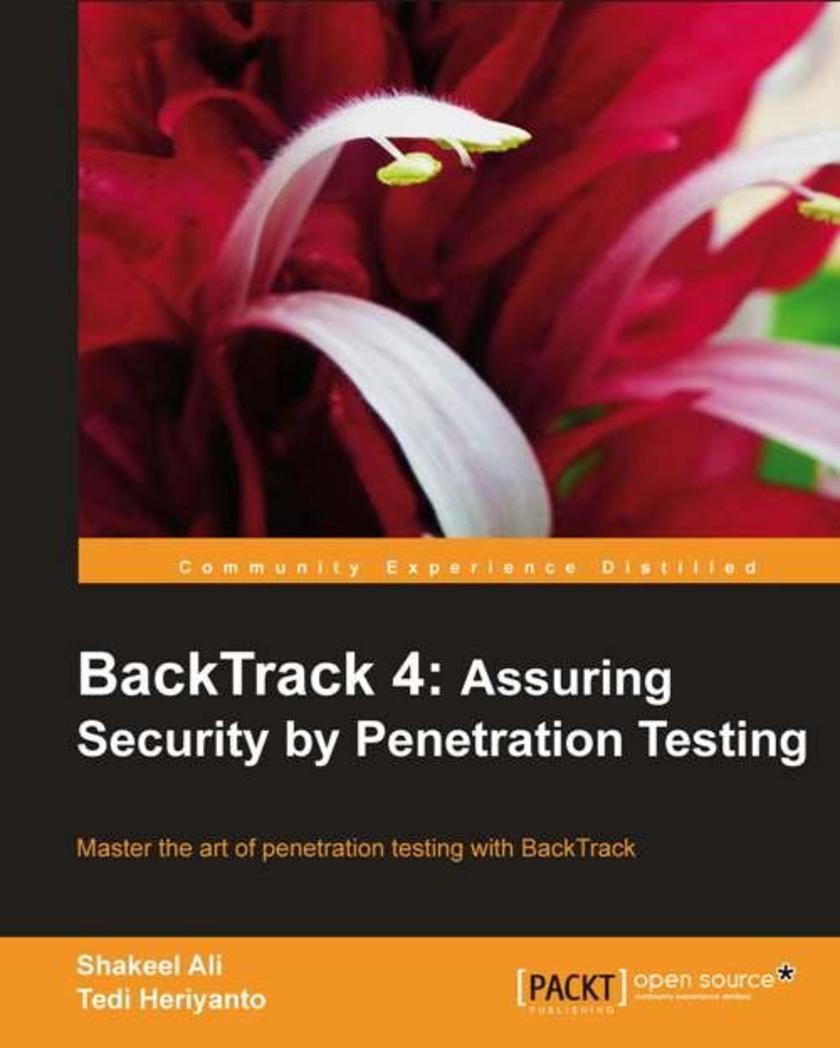
Backtrack 4: Assuring Security by Penetration Testing
¥90.46
Written as an interactive tutorial, this book covers the core of BackTrack with real-world examples and step-by-step instructions to provide professional guidelines and recommendations to you. The book is designed in a simple and intuitive manner, which allows you to explore the whole BackTrack testing process or study parts of it individually. If you are an IT security professional or network administrator who has a basic knowledge of Unix/Linux operating systems including awareness of information security factors, and you want to use BackTrack for penetration testing, then this book is for you.
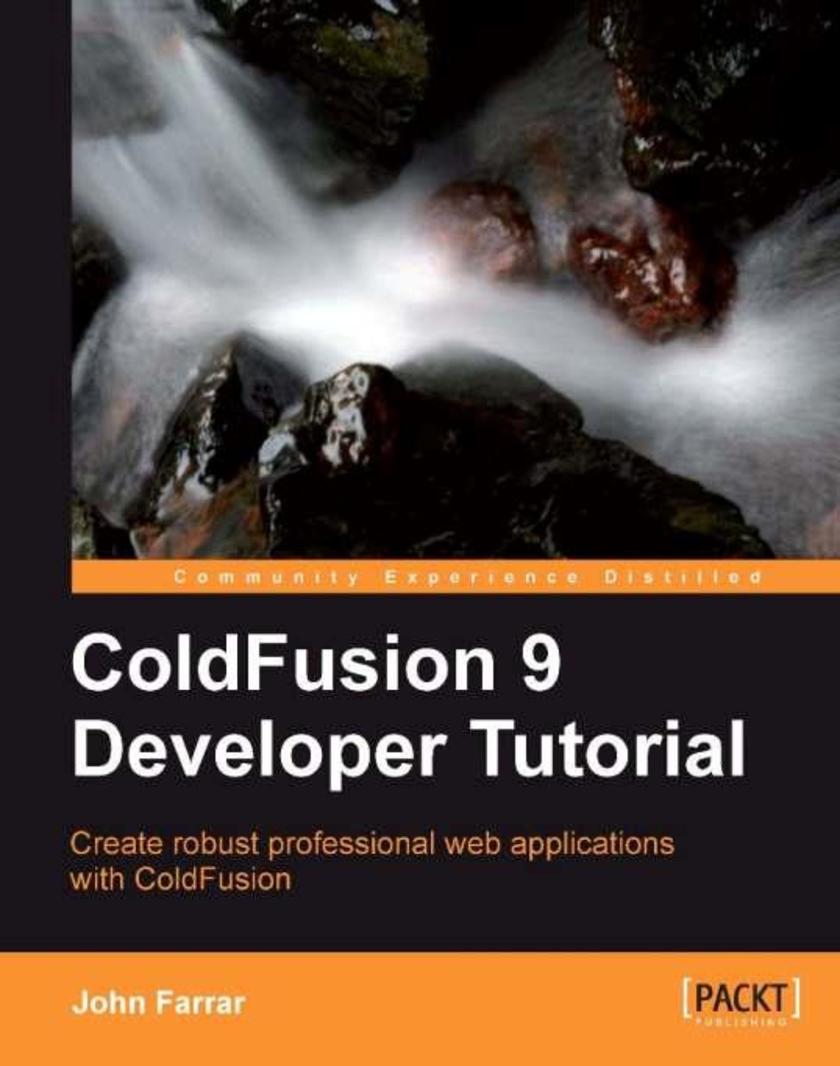
ColdFusion 9 Developer Tutorial
¥90.46
This book is a fast-paced tutorial to developing ColdFusion applications, with an emphasis on real-world skills. Packed with examples and careful explanations, the book leads you through all the topics relevant to today's ColdFusion developer. This book is for web developers working with ColdFusion 9. If your goal is to get a good grounding in the basics of the language as quickly as possible and put a site together quickly, this book is ideal for you. This book will also help you if you want to learn more about professional programming of ColdFusion. No prior knowledge of ColdFusion is expected, but basic knowledge of general web and software development skills is assumed.
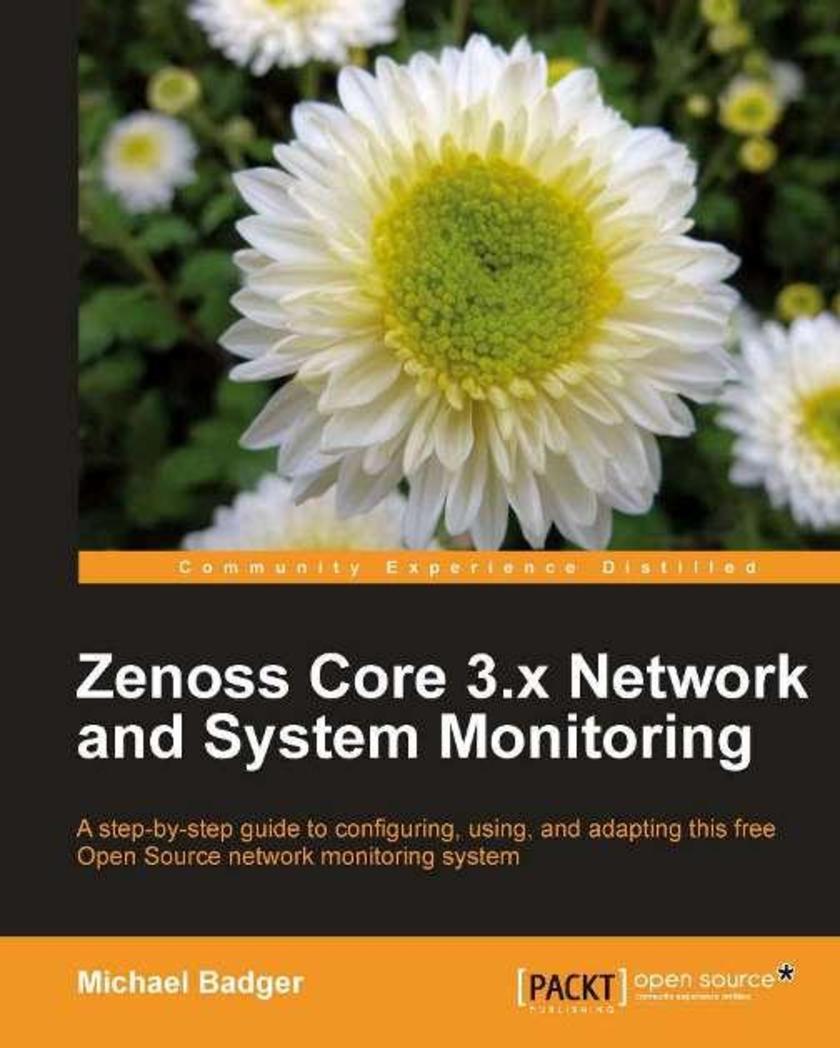
Zenoss Core 3.x Network and System Monitoring
¥90.46
The book starts by covering installation and configuration, before moving on to administration and dashboard usage. It contains step-by-step instructions for setting up and using a working, capable Zenoss system. This book is written primarily for network and systems administrators who are monitoring their IT assets with Zenoss Core or who plan to monitor them. In reality, this book will benefit anyone, regardless of job title, who recognizes the importance of proactively monitoring the servers, routers, computers, websites, and devices that connect companies to customers.
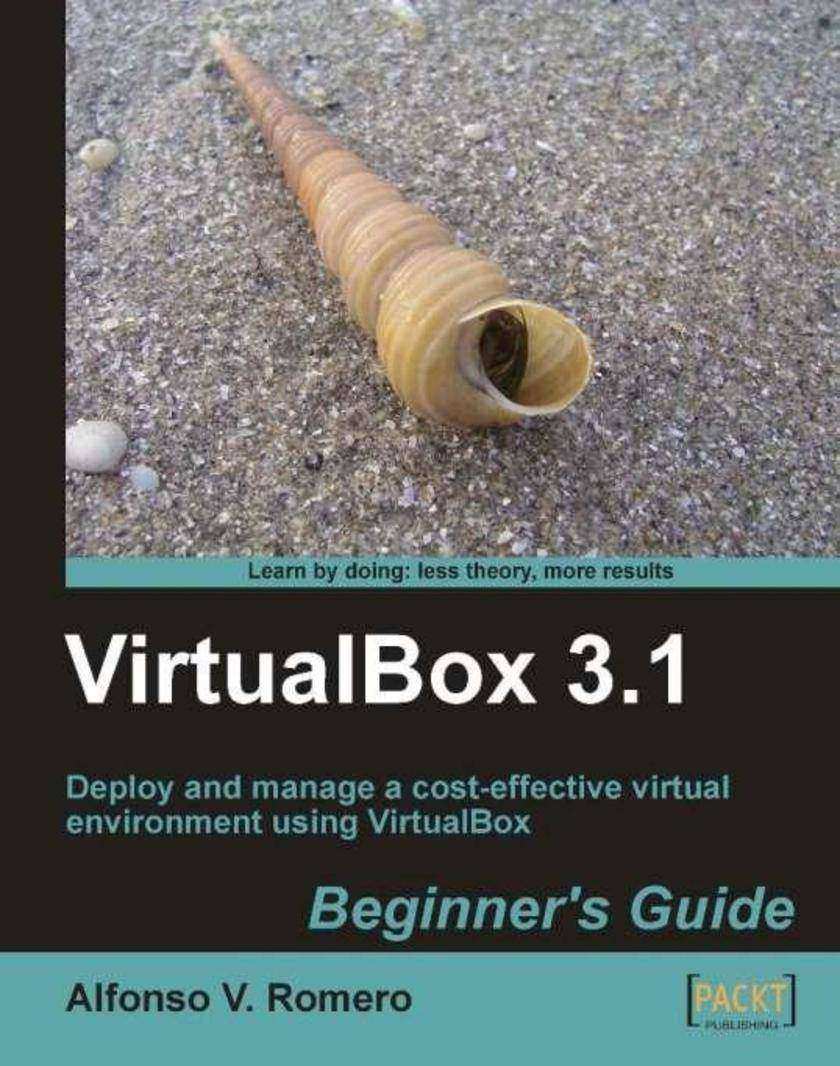
VirtualBox 3.1: Beginner's Guide
¥90.46
This beginner's guide consists of comprehensive explanation, appropriate screenshots, tips, tricks, and best practices. It offers step-by-step instructions on building your own virtual environment from scratch, supported by the reasoning behind what you do. If you are a System Administrator who has to set up a virtual machine and want to use an open source tool to do it this book will prove invaluable. No prior knowledge of VirtualBox is required, but you should have experience with general system administration.
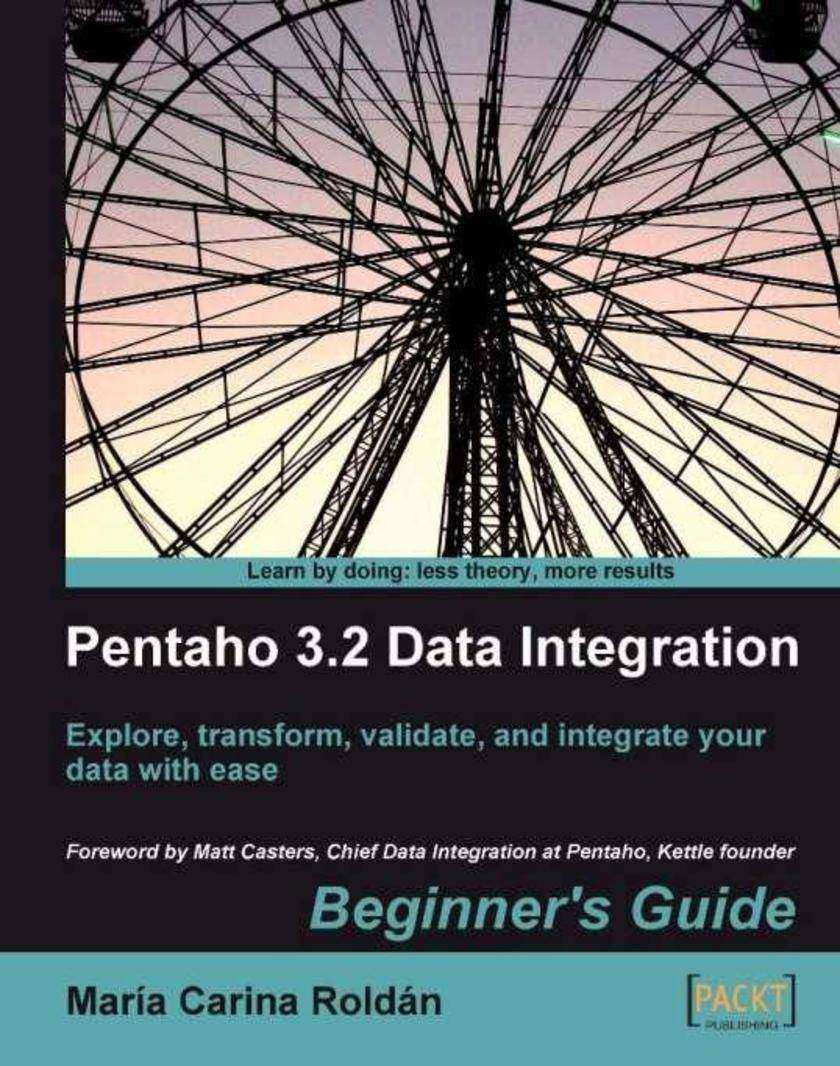
Pentaho 3.2 Data Integration: Beginner's Guide
¥90.46
As part of Packt's Beginner's Guide, this book focuses on teaching by example. The book walks you through every aspect of PDI, giving step-by-step instructions in a friendly style, allowing you to learn in front of your computer, playing with the tool. The extensive use of drawings and screenshots make the process of learning PDI easy. Throughout the book numerous tips and helpful hints are provided that you will not find anywhere else. The book provides short, practical examples and also builds from scratch a small datamart intended to reinforce the learned concepts and to teach you the basics of data warehousing. This book is for software developers, database administrators, IT students, and everyone involved or interested in developing ETL solutions, or, more generally, doing any kind of data manipulation. If you have never used PDI before, this will be a perfect book to start with. You will find this book is a good starting point if you are a database administrator, data warehouse designer, architect, or any person who is responsible for data warehouse projects and need to load data into them. You don't need to have any prior data warehouse or database experience to read this book. Fundamental database and data warehouse technical terms and concepts are explained in easy-to-understand language.
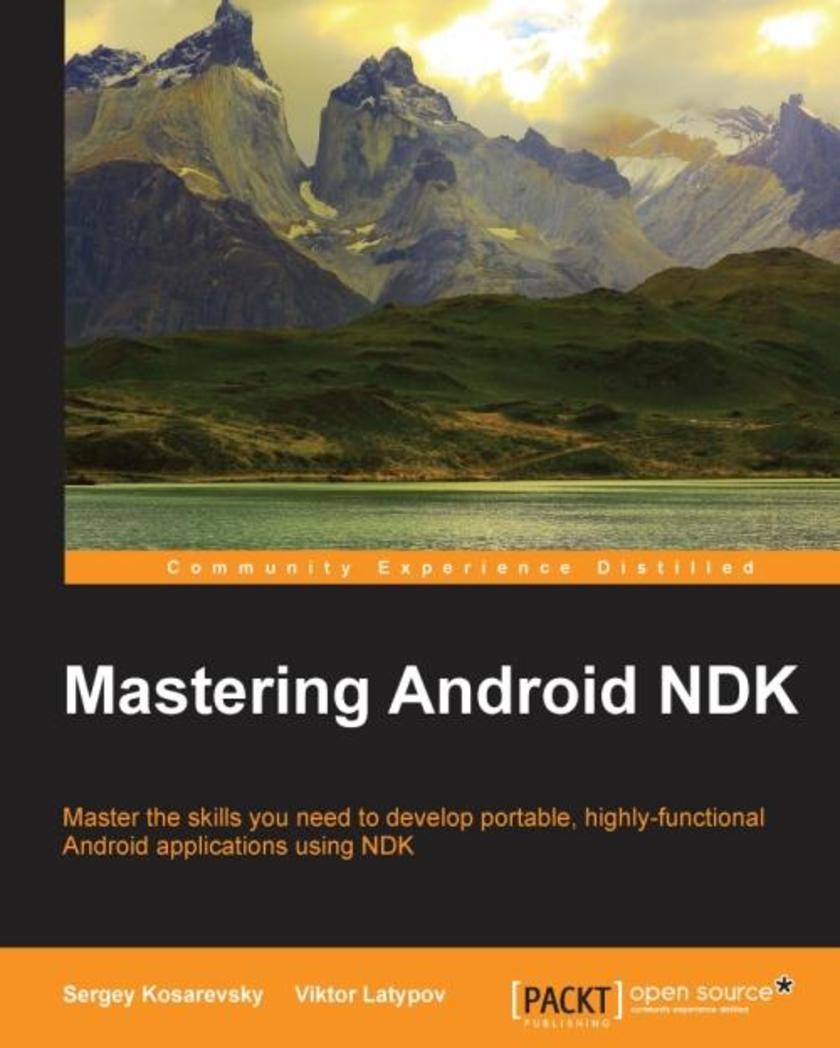
Mastering Android NDK
¥90.46
Master the skills you need to develop portable, highly-functional Android applications using NDK About This Book Develop portable games using Android NDK and debug them on your desktop Familiarise yourself with different popular C++ libraries on Android and use them in your games Write multi-threaded code with graphics, sound, networking, and resource storage Who This Book Is For If you want to leverage your C++ skills in mobile development and increase the performance of your Android applications, then this is the book for you. Knowledge of C or C++ is assumed, including pointer manipulation, multi-threading, object-oriented programming concepts, and the basics of C++11. It would be an added advantage if you know how to develop applications without any IDE. What You Will Learn Explore popular C++ libraries and use them on Android Write portable, multithreaded native networking code Create portable audio framework using OpenAL Implement portable rendering framework using OpenGL ES 3 Debug mobile applications on your desktop machine Access resources from APK archives Render text with FreeType In Detail Android NDK is used for multimedia applications that require direct access to system resources. NDK is also the key for portability, which in turn allows a reasonably comfortable development and debugging process using familiar tools such as GCC and Clang toolchains. This is a hands-on guide to extending your game development skills with Android NDK. The book takes you through many clear, step-by-step example applications to help you further explore the features of Android NDK and some popular C++ libraries and boost your productivity by debugging the development process. Through the course of this book, you will learn how to write portable multi-threaded native code, use HTTP networking in C++, play audio files, use OpenGL ES 3, and render high-quality text. Each chapter aims to take you one step closer to building your application. By the end of this book, you will be able to create an engaging, complete gaming application. Style and approach This book adopts a step-by-step approach and each chapter is based on the material from the previous ones. The book focuses on putting to your knowledge of C++ use while you develop Android applications of your own.

Mastering LibGDX Game Development
¥90.46
Leverage the power of LibGDX to create a fully functional, customizable RPG game for your own commercial title About This Book Learn game architecture and design patterns with concrete examples using proper software engineering principles Save time and money with this handy reference guide for future game development with LibGDX Design and develop a fully functional RPG video game from scratch with a hands on, step-by-step approach using LibGDX Who This Book Is For If you are an intermediate-level game developer who wants to create an RPG video game but found the creation process overwhelming, either by lack of tutorials or by getting lost in a sea of game-related technologies, engines, or frameworks, then this book is for you. This book assumes familiarity with Java and some basic knowledge of LibGDX. What You Will Learn Develop characters with stat attributes, player movement, animation, physics, and collision detection Create interactive NPC characters with speech windows and build immersion via dialog trees Build inventory management system UIs with drag and drop items to sell, buy, and equip Design a quest system to expand out the content of your game Form interesting enemies with battle mechanics and spawn points Devise *ed cutscenes to add an element of story and drama Develop save and load game profiles Create special effects to give the game extra “juiciness” and polish, and help build the atmosphere In Detail LibGDX is a Java-based framework developed with a heavy emphasis on performance, and includes cross-platform support out of the box (Windows, OS X, Linux, iOS, Android, and HTML5) as well as providing all the low-level functionality so that you can focus on developing your game and not battling with the platform. LibGDX also has an engaged and responsive community, active maintenance, and is available for free without a prohibitive license. Starting from the beginning, this book will take you through the entire development process of creating an RPG video game using LibGDX. First, this book will introduce you to the features specific to RPG games, as well as an overview of game architecture. Then, you will create map locations, develop character movement, add animation, integrate collision detection, and develop a portal system. Next, you will learn and develop a HUD and other UI components, as well as an inventory management system. You will then develop NPC interactions including dialog trees, shopkeepers, and quest givers. After this, you will design and create battle features for fighting enemies, as well as event triggers for world events. Finally, you will add the final polish with sound, music, and lighting effects. By the end of this book, you will have learned and applied core components from the LibGDX framework, as well as have a finished game to use as a springboard for customization and story development for your own commercial video game. Style and approach This book walks you through the concepts and implementation of developing a complete RPG game, unfolding chapter by chapter and building upon previous concepts. Each chapter can be used as an individual reference with diagrams to explain core concepts with concrete example code explained in detail.
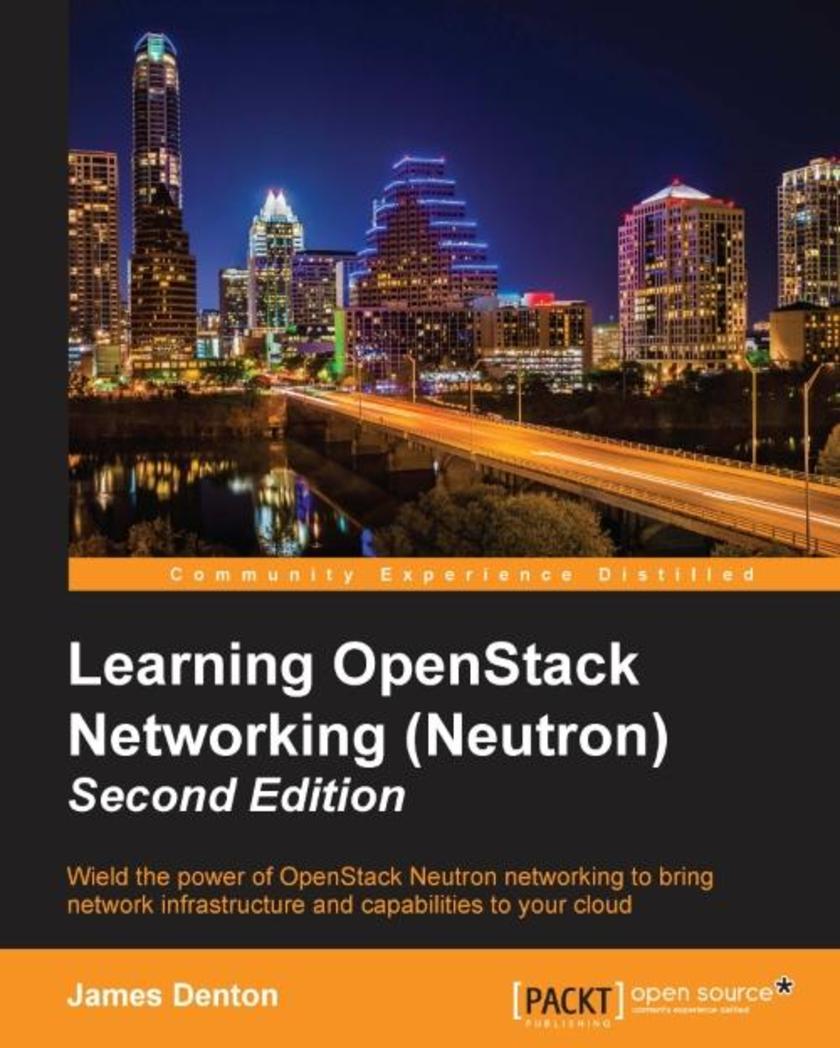
Learning OpenStack Networking (Neutron) - Second Edition
¥90.46
Wield the power of OpenStack Neutron networking to bring network infrastructure and capabilities to your cloud About This Book This completely up-to-date edition will show you how to deploy a cloud on OpenStack using community-driven processes. It includes rich examples that will help you understand complex networking topics with ease Understand every aspect of designing, creating, customizing, and maintaining the core network foundation of an OpenStack cloud using OpenStack Neutron all in one book Written by best-selling author James Denton, who has more than 15 years of experience in system administration and networking. James has experience of deploying, operating, and maintaining OpenStack clouds and has worked with top enterprises and organizations Who This Book Is For If you are an OpenStack-based cloud operator and administrator who is new to Neutron networking and wants to build your very own OpenStack cloud, then this book is for you. Prior networking experience and a physical server and network infrastructure is recommended to follow along with concepts demonstrated in the book. What You Will Learn Architect and install the latest release of OpenStack on Ubuntu Linux 14.04 LTS Review the components of OpenStack networking, including plugins, agents, and services, and learn how they work together to coordinate network operations Build a virtual switching infrastructure using reference architectures based on ML2 + Open vSwitch or ML2 + LinuxBridge Create networks, subnets, and routers that connect virtual machine instances to the network Deploy highly available routers using DVR or VRRP-based methods Scale your application with haproxy and Load Balancing as-a-Service Implement port and router-level security using Security Groups and Firewall as-a-Service Provide connectivity to tenant networks with Virtual Private Networking as-a-Service (VPNaaS) Find out how to manage OpenStack networking resources using CLI and GUI-driven methods In Detail OpenStack Neutron is an OpenStack component that provides networking as a service for other OpenStack services to architect networks and create virtual machines through its API. This API lets you define network connectivity in order to leverage network capabilities to cloud deployments. Through this practical book, you will build a strong foundational knowledge of Neutron, and will architect and build an OpenStack cloud using advanced networking features. We start with an introduction to OpenStack Neutron and its various components, including virtual switching, routing, FWaaS, VPNaaS, and LBaaS. You’ll also get hands-on by installing OpenStack and Neutron and its components, and use agents and plugins to orchestrate network connectivity and build a virtual switching infrastructure. Moving on, you’ll get to grips with the HA routing capabilities utilizing VRRP and distributed virtual routers in Neutron. You’ll also discover load balancing fundamentals, including the difference between nodes, pools, pool members, and virtual IPs. You’ll discover the purpose of security groups and learn how to apply the security concept to your cloud/tenant/instance. Finally, you'll configure virtual private networks that will allow you to avoid the use of SNAT and floating IPs when connecting to remote networks. Style and approach This easy-to-follow guide on networking in OpenStack follows a step-by-step process to installing OpenStack and configuring the base networking components. Each major networking component has a dedicated chapter that will build on your experience gained from prior chapters.
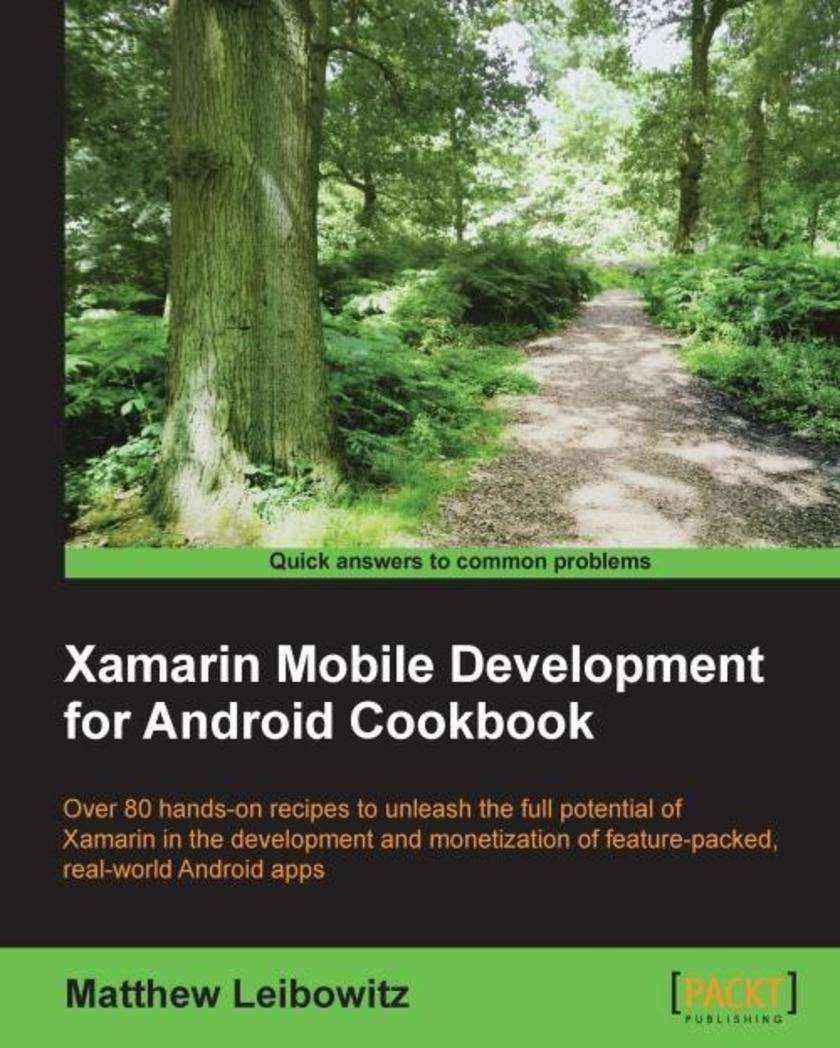
Xamarin Mobile Development for Android Cookbook
¥90.46
Over 80 hands-on recipes to unleash full potential for Xamarin in development and monetization of feature-packed, real-world Android apps About This Book Create a number of Android applications using the Xamarin Android platform Extensively integrate your Android devices with other Android devices to enhance your app creation experience A comprehensive guide packed with real-world scenarios and pro-level practices and techniques to help you build successful Android apps Who This Book Is For If you are a Xamarin developer who wants to create complete Android applications with Xamarin, then this book is ideal for you. No prior knowledge of Android development is needed, however a basic knowledge of C# and .NET would be useful. What You Will Learn Install and use Xamarin.Android with Xamarin Studio and Visual Studio Design an app’s user interface for multiple device configurations Store and protect data in databases, files, and on the cloud Utilize lists and collections to present data to the user Communicate across the network using NFC or Bluetooth Perform tasks in the background and update the user with notifications Capture and play multimedia, such as video and audio, with the camera Implement In-App Billing and Expansion Files and deploy to the store In Detail Xamarin is used by developers to write native iOS, Android, and Windows apps with native user interfaces and share code across multiple platforms not just on mobile devices, but on Windows, Mac OS X, and Linux. Developing apps with Xamarin.Android allows you to use and re-use your code and your skills on different platforms, making you more productive in any development. Although it’s not a write-once-run-anywhere framework, Xamarin provides native platform integration and optimizations. There is no middleware; Xamarin.Android talks directly to the system, taking your C# and F# code directly to the low levels. This book will provide you with the necessary knowledge and skills to be part of the mobile development era using C#. Covering a wide range of recipes such as creating a simple application and using device features effectively, it will be your companion to the complete application development cycle. Starting with installing the necessary tools, you will be guided on everything you need to develop an application ready to be deployed. You will learn the best practices for interacting with the device hardware, such as GPS, NFC, and Bluetooth. Furthermore, you will be able to manage multimedia resources such as photos and videos captured with the device camera, and so much more! By the end of this book, you will be able to create Android apps as a result of learning and implementing pro-level practices, techniques, and solutions. This book will ascertain a seamless and successful app building experience. Style and approach This book employs a step-by-step approach to Android app creation, explained in a conversational and easy-to-follow style. A wide range of examples are listed to ensure a complete understanding of how to deploy competent apps on the Android market.
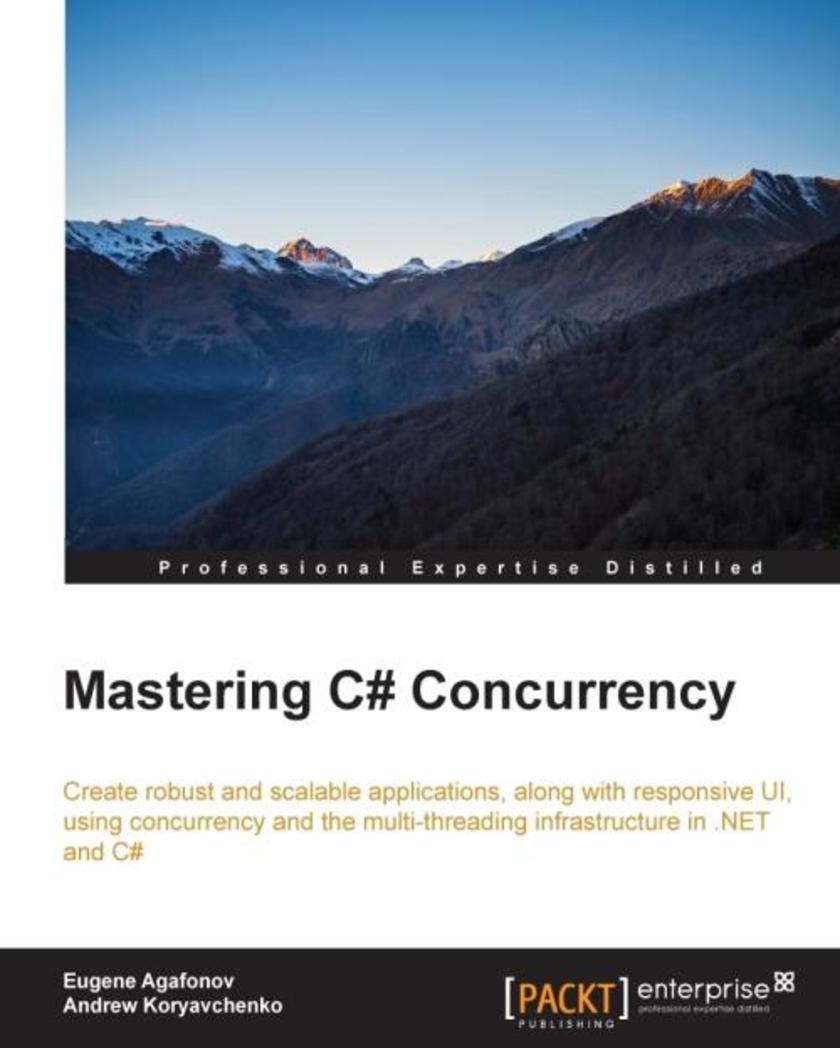
Mastering C# Concurrency
¥90.46
Create robust and scalable applications along with responsive UI using concurrency and the multi-threading infrastructure in .NET and C#About This BookLearn to combine your asynchronous operations with Task Parallel LibraryMaster C#’s asynchronous infrastructure and use asynchronous APIs effectively to achieve optimal responsiveness of the applicationAn easy-to-follow, example-based guide that helps you to build scalable applications using concurrency in C# Who This Book Is For If you are a C# developer who wants to develop modern applications in C# and wants to overcome problems by using asynchronous APIs and standard patterns, then this book is ideal for you. Reasonable development knowledge, an understanding of core elements and applications related to the .Net platform, and also the fundamentals of concurrency is assumed.What You Will LearnApply general multithreading concepts to your application’s designLeverage lock-free concurrency and learn about its pros and cons to achieve efficient synchronization between user threadsCombine your asynchronous operations with Task Parallel LibraryMake your code easier with C#’s asynchrony supportUse common concurrent collections and programming patternsWrite scalable and robust server-side asynchronous codeCreate fast and responsible client applicationsAvoid common problems and troubleshoot your multi-threaded and asynchronous applications In Detail Starting with the traditional approach to concurrency, you will learn how to write multithreaded concurrent programs and compose ways that won't require locking. You will explore the concepts of parallelism granularity, and fine-grained and coarse-grained parallel tasks by choosing a concurrent program structure and parallelizing the workload optimally. You will also learn how to use task parallel library, cancellations, timeouts, and how to handle errors. You will know how to choose the appropriate data structure for a specific parallel algorithm to achieve scalability and performance. Further, you'll learn about server scalability, asynchronous I/O, and thread pools, and write responsive traditional Windows and Windows Store applications. By the end of the book, you will be able to diagnose and resolve typical problems that could happen in multithreaded applications.Style and approach An easy-to-follow, example-based guide that will walk you through the core principles of concurrency and multithreading using C#.




 购物车
购物车 个人中心
个人中心



